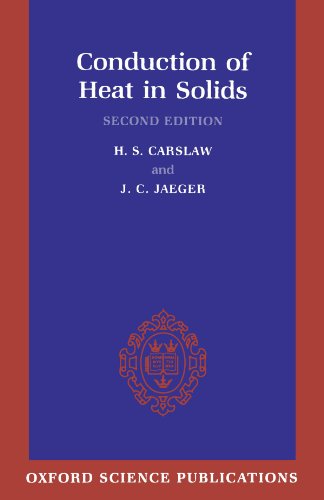Conduction of Heat in Solids pdf free
Par hathorn ladonna le mardi, août 23 2016, 00:30 - Lien permanent
Conduction of Heat in Solids. H. S. Carslaw, J. C. Jaeger

Conduction.of.Heat.in.Solids.pdf
ISBN: 0198533683,9780198533689 | 517 pages | 13 Mb

Conduction of Heat in Solids H. S. Carslaw, J. C. Jaeger
Publisher: Oxford University Press, USA
Conduction is the transfer of heat along a solid object; it is this process that makes the handle of a poker hot, even if only the tip is in the fireplace. We'll also introduce radiation, gravity and heat conduction in solids. Conduction is the one of three types of heat transfer in which thermal energy transfers from one point to another through the interaction between the atoms or molecules of the matter. For example, metals are better conductor than wood or plastic. Thermal conduction exists in solids, liquids and gasses. These waves have different wave lengths depending on the temperature of the heat source. Conductive Heat Transfer Heat-transfer equipment in which heat is transferred by conduction is so constructed that the solids load (burden) is separated from the heating medium by a wall. Any radiation which is absorbed turns into heat. Transfer of heat in solids is by conduction. Such bad conductors of heat are called insulators. You may be able to do some useful scaling of cooling times without getting a full solution. Transfer of heat within a fluid is by convection. For example, if one end of a metal rod is heated up, the heat will gradually travel to the other end until the entire rod becomes hot. Liquids: Most of the liquids transfer heat very well. Heat Conduction takes place in solids, liquids, and gases, but works best in materials that have simple molecules that are located close to each other. There is a simple solution, but first let's learn a little about heat conduction: 1. The standard reference for analytical solutions is "Conduction of heat in solids", Carslaw & Jaeger, 1959. Heat can be transferred by three processes: conduction, convection, and radiation. Let's talk about heat – solids, liquids, and gases are made up of molecules.